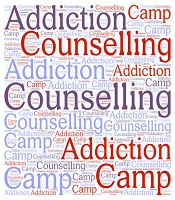Dear Editor,
Temporary residential centers in Iran include addiction treatment camps, shelters, Samansara, warm houses (Garmkhaneh), Article 15 and 16 centers, and other harm reduction centers that provide services to clients or substance users for rehabilitation and treatment (1). The effectiveness of these centers in society is unclear, and comprehensive studies are needed. One of these centers is addiction treatment camps, which are mainly under the supervision of the Welfare Organization (WO). Field observations indicate that keeping addicts in a closed, prison-like environment such as camps is not effective, as many individuals return to substance use after being released and become opioid and stimulant users. Additionally, confining these individuals in a closed environment can lead to the transmission of infectious diseases such as HIV, HBV, and HCV (2-11). The only apparent benefit of these camps may be the improved appearance of cities, as addicts become less visible to the public, particularly tourists. Therefore, if these camps are to be maintained, reforms in their approach are necessary. One of the most important and effective measures is implementing psychological interventions, which can provide a suitable platform for improving the mental state of clients. Furthermore, several factors influence the return of individuals to these camps, all of which should be examined and explored. Research on interventions that significantly reduce the return of individuals to camps is highly recommended. In some centers, clients are taught job skills, often in a practical manner within small workshops in the residential centers themselves, which should be strengthened and given more attention. By expanding employment workshops in these centers, clients can learn skills and gain employment opportunities post-release, provided that follow-ups are conducted and clients are not left unsupported. Additionally, it is necessary to continuously strengthen psychological counseling by expert psychologists in the field of addiction to prevent relapse and subsequent return to the camp after release. Finally, it is suggested that if these residential centers are to remain viable and practical, skill training and employment workshops should be expanded within the centers, or the centers should be reformed into employment workshops to play an effective role in the country's economy and ensure productivity considering cost-effectiveness.
